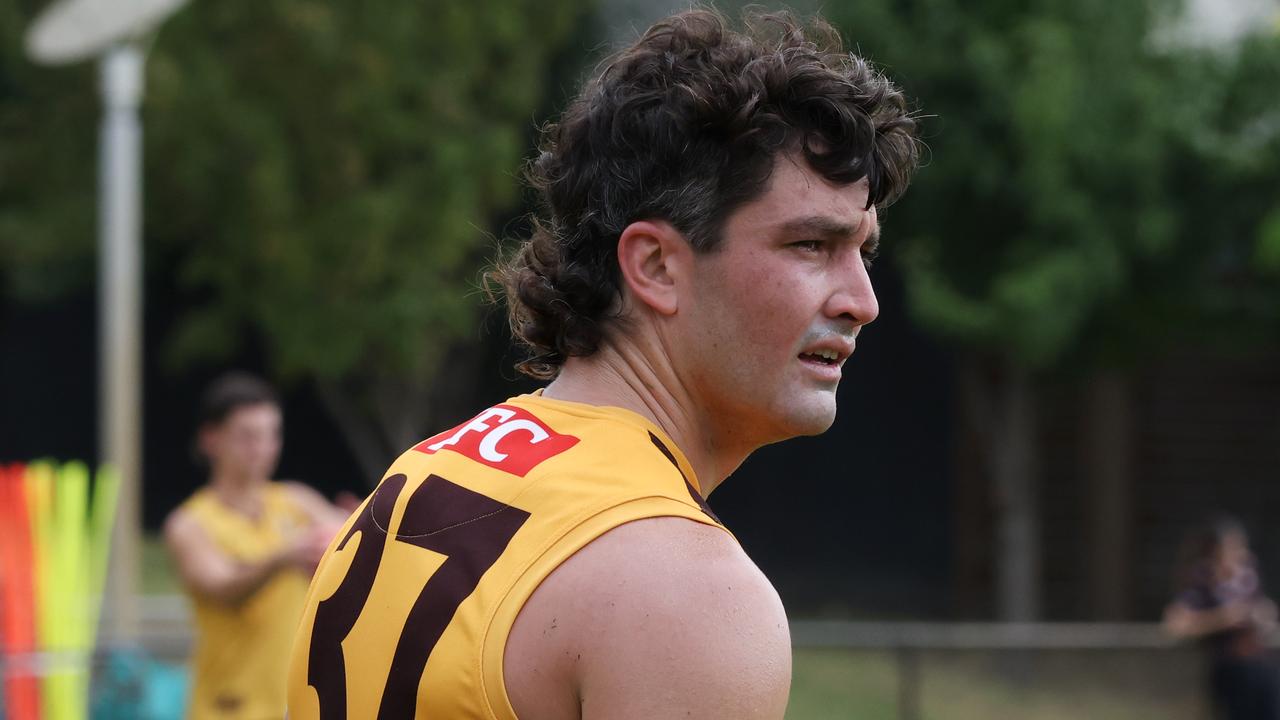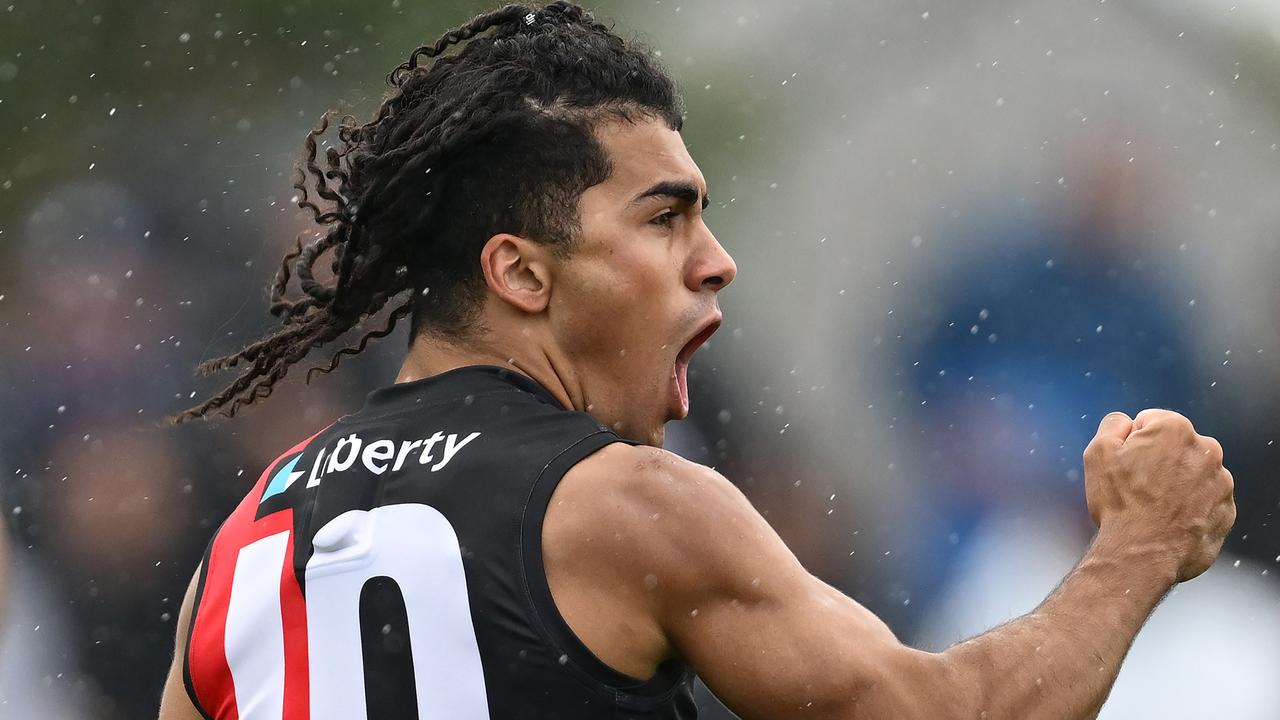Brad Hardie, Ken Hunter and Ron Evans inducted into the Australian Football Hall of Fame
The breakdown of Brad Hardie’s relationship with Mick Malthouse is known for coming to a head during a famous game in 1986. However, the champion from the west is convinced it was another moment that kick started the feud.
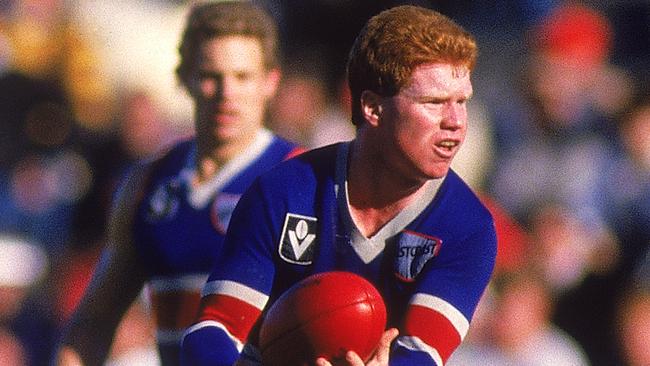
AFL News
Don't miss out on the headlines from AFL News. Followed categories will be added to My News.
The doctor didn’t mince his words: “You’re not going to play footy again.”
Brad Hardie had other ideas.
For six months he’d looked out over Fremantle Oval from his hospital ward, watching every training run and game.
CLICK HERE TO SUBSCRIBE TO THE SUPERFOOTY PODCAST
It had cemented in his 15-year-old mind exactly what he wanted to do but there were a few hurdles to overcome.
Hardie was recovering from a horrible accident at a mate’s place where he ended up suffering burns to 45 per cent of his upper body. The doctor’s advice was that collision sports wouldn’t be appropriate.
With plenty of time to think, he came up with a plan.
A long-sleeve jumper would help cover the scarring on his arms but his hips, which had been affected in the accident, also needed protection.
KEY MEETINGS: HOW BOLTON’S SACKING UNFOLDED
ROBBO: WHY THE BLUES MUST TRY CLARKO
LIST CHANGES: WHERE THINGS WENT WRONG FOR BLUES
Two tin plates from his father’s garage, some foam from a factory down the road and a roll of Elastoplast solved the problem.
So when Hardie arrived at South Fremantle the following pre-season he had his homemade protection plates strapped tightly to each hip.
After seven games in the U/19s he was elevated to the reserves and then selected in the WA Teal Cup side.
When he returned from the national carnival in Tasmania, South’s coach Mal Brown put him straight into the senior team in the back pocket.
Hardie played the last six games of the season but was left out of the Grand Final team — as was Mark ‘Jacko’ Jackson — which Souths lost to East Fremantle.
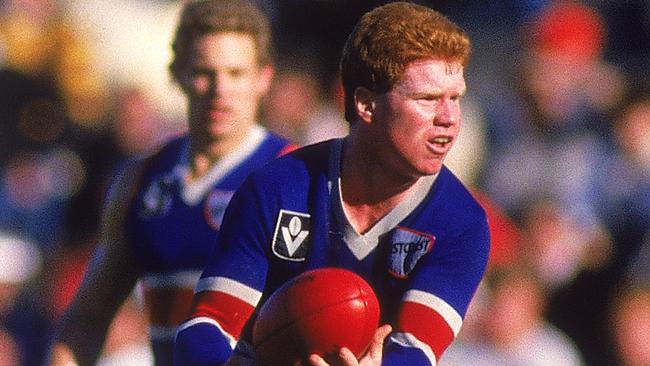
The next season he established himself as a rising star of the WAFL as South Fremantle won the premiership — which would turn out to be the only one of Hardie’s career.
In 1984 he won the Tassie Medal for the best player at the annual interstate carnival. By this time clubs from across the Nullarbor were circling.
Melbourne had visited, Richmond had sent him a signed Bruce Monteath jumper and encouraged him not to sign with anyone else while Geelong coach Tom Hafey had also been on the phone.
But it all amounted to nothing with the Tigers instead going for David Palm and Geelong signing South Australian Bruce Linder.
It wasn’t until Footscray’s general manager Shane O’Sullivan approached him after his starring role for WA that he was guaranteed a VFL career.
Hardie, 22, was best-on-ground in his first game for the Bulldogs against Carlton at Princes Park and the long-sleeved red head defender quickly became a fan favourite.
The club hadn’t played finals for nine years but with Mick Malthouse in his second year at the helm something clicked and they finished second at the end of the home and away season.
A 93-point flogging in the qualifying final against Hawthorn took the wind out of the sails but it was a different story when the teams met two weeks later in the preliminary final.
Even 34 years on, Hardie shakes his head when the game is brought up.
Only one point separated the teams at three-quarter time before Hawks legend Leigh Matthews — who was Hardie’s opponent — kicked two goals in the final term to get his team home.
“He got lucky,” Hardie says. “It’s funny how it has become this urban myth. No-one said anything on the day, no-one said anything the next year, it was never ever addressed but now all of a sudden it (the loss) was my fault.”
Two days later Hardie cemented his place in VFL/AFL history by becoming just the second player to win the Brownlow Medal in his first season (joining Haydn Bunton Snr).
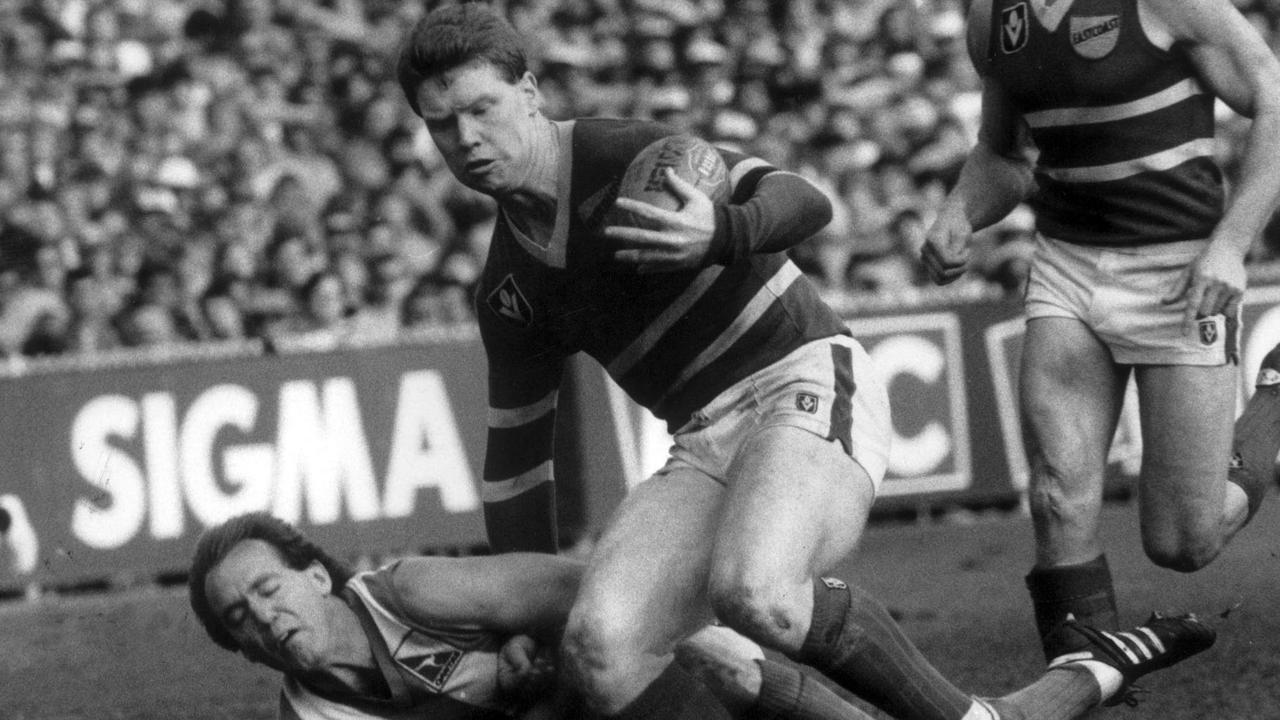
Two votes in the final round against St Kilda saw him leapfrog Carlton ruckman Justin Madden to win by one vote.
Hardie says winning the game’s highest honour played a role in the deterioration of his relationship with Malthouse.
“We fell out after that because I don’t think he enjoyed the profile that I had got instantaneously off the back of that. And I just didn’t like his style as a coach.”
Things came to a head in the second last round of the 1986 season when Hardie was dragged by Malthouse and responded by taking off his jumper and waving it defiantly.
He knew then that his days at Footscray were numbered so he decided to follow O’Sullivan to Brisbane for the Bears’ inaugural season.
Hardie became the first player to play 100 games at the expansion team where he also kicked 192 goals in five seasons.
There was then a brief stopover at Collingwood — he played two games to take his AFL career tally to 150 — before heading home for one last season at Souths.
Fittingly this rollercoaster journey has now finally found its rightful finishing position in the AFL Hall of Fame.
“When you think about the career you’ve forged, this puts a stamp on it which is really nice.”
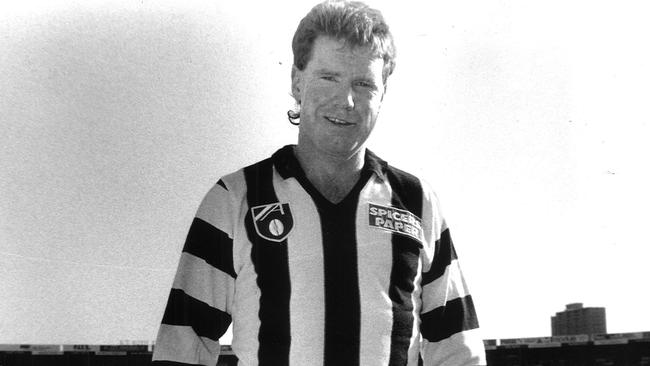
HOW HUNTER CHANGED MENTAL HEALTH IN AFL
Sam Edmund
Ken Hunter was Australian Rules for courage.
But what separates the Carlton great from many was that he was just as courageous off the field as he was on it.
Hunter’s premiership and All-Australian-laden 147-game Blues career, choc-full of heroic marks and fearless attacks on the ball, was followed a decade later in 1998 by arguably an ever braver act — an admission that depression had haunted him late in his playing days.
It was the first time a VFL/AFL player had spoken of their battle with the Black Dog.
“It’s probably the hardest thing I’ve ever done in my life, to be honest,” Hunter said.
“But I wanted the AFL to know there’s an underlying issue and for people in society to know they’re not on their own.
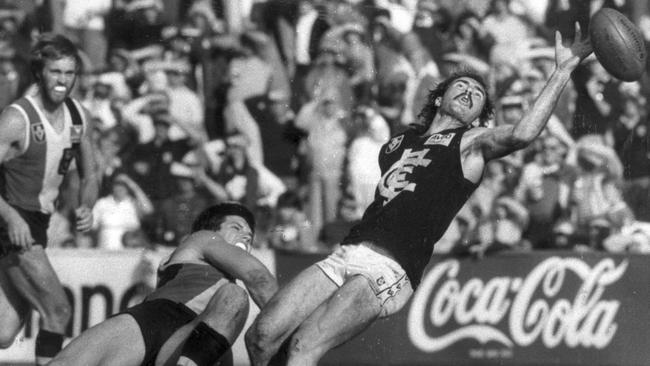
“I experienced the highest of highs and lowest of lows in my career.”
Hunter was a 23-year-old West Australian and 99-game WAFL player hardened by three broken jaws by the time he arrived at Princes Park on the eve of the 1981 season.
North Melbourne had been interested, but were scared off by Hunter’s injuries, while Richmond thought his 183cm, 76kg frame wouldn’t survive the VFL.
“All us kids growing up, we used to watch The Winners. Every Sunday night you’d go down to the pub and watch it and your dream was to follow these guys and play in the VFL because if you wanted to prove yourself that’s where you had to go,” Hunter said.
“The Carlton players didn’t know who I was, which probably wasn’t a bad thing because you had to earn respect and put your head down.
“They used to go to the pub after every training session and get smashed pretty much. Trevor Keogh said to me: ‘What position do you play, mate?’ and when I said ‘half back’ he goes: ‘Oh well, good luck, there’s only about three All-Australians in the backline’.”
It would be the last time anyone ever questioned Hunter’s credentials.
SACKED: HOW BOLTON FOUND OUT HE WAS BEING AXED
REVIEW: STAR CALLS FOR TECHNOLOGY TO BE SCRAPPED
Blues fans and teammates would wince as Hunter’s spindly frame, with socks down and mop of hair flowing, flew and ran into packs from all angles to take highlight-reel grabs on a weekly basis.
“That’s the way I played my whole career,” he said.
“Mal Brown got me down to Claremont and I had my jaw broken three times by 19. The press said I should give the game away because I was too reckless and that I was not only a danger to myself, but to other players.
“But I wasn’t about to do that. If it came in my area I just wanted to get it. I didn’t worry about the consequences too much.”
Hunter won the best and fairest in his 1981 debut season and was instrumental in the first of back-to-back flags.
‘Kenny’ would finish with four All-Australian gongs, three flags and a place in the Blues’ team of the century, while his bravery and skill ensured he had a spot in every Carlton supporters’ heart.
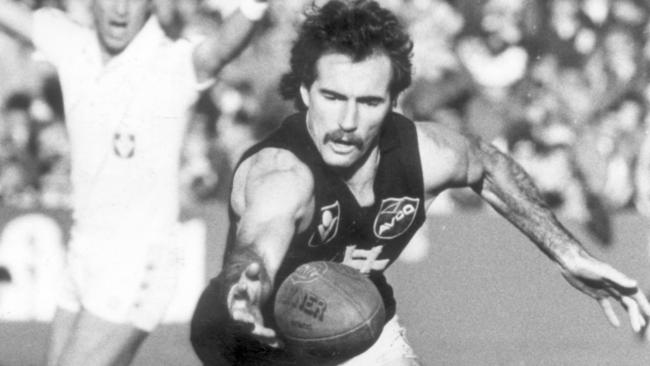
But when he was dropped for the first time in his career in 1988 his mental demons emerged and quickly “spiralled out of control”.
“I was in and out of the side, taking sleeping pills and trying to hide it. I didn’t know what was wrong with me, the doctor was giving me stronger pills and it got to the point where I just couldn’t play anymore,” Hunter said.
He returned in 1989 to finish on his terms and a decade later laid his troubles bare.
He has since established FIFTHQTR, which provides mental health and high performance programs, with former teammate Ken Sheldon.
“No one spoke about mental health then, there was no Beyond Blue or support services,” Hunter said.
“I learned a lot about myself, as people do who go through that. You work through what the important things in life are.
“It was part of my football story. I’m not bitter and twisted. Life goes on and you get on with things.”
‘MAN OF HONOUR’ EVANS INTO HALL OF FAME
Jon Anderson
Despite his extreme level of achievement in both football and business, it’s as a man of honour that the late Ron Evans, AM, will be forever remembered.
Evans, who died of abdominal cancer aged 67 in 2007, prided himself on his relationships that were built by respecting people. He also prided himself on time management, such as the finals series of 1962 when injury and a new Essendon coach in John Coleman had conspired to put a premature end to his season.
But ever the team man, Evans was desperate to ensure his teammates got the best chance possible to win their first flag in 12 years, so he arranged his wedding to childhood sweetheart Andrea Danielson at the local Methodist church in Strathmore for Friday, September 29, providing time for a quick honeymoon in Surfers Paradise before returning to his promising district cricket career with North Melbourne.
TRADE GUIDE: THE PLAYERS WHO WILL SHAPE BYE ROUNDS
INJURY NEWS: GIANTS STAR COULD MISS SIX WEEKS
LIST ISSUES: BLOWTORCH TURNS ON BLUES RECRUITING
In theory it was typically sound thinking until Geelong and Carlton drew the preliminary final, putting the Grand Final back a week and prompting the “never before or since” scenes of four Essendon players in best man Ken Fraser plus Russell Blew, Jack Clarke and Don McKenzie going to a wedding on the Friday before a VFL Grand Final. Fraser, 79, smiles when recalling the unusual sequence of events.
“Ron and I played with the local church team in the Essendon District Football League as 16 and 17 year olds and quickly became friends with our love of football and similar values,” said Fraser.
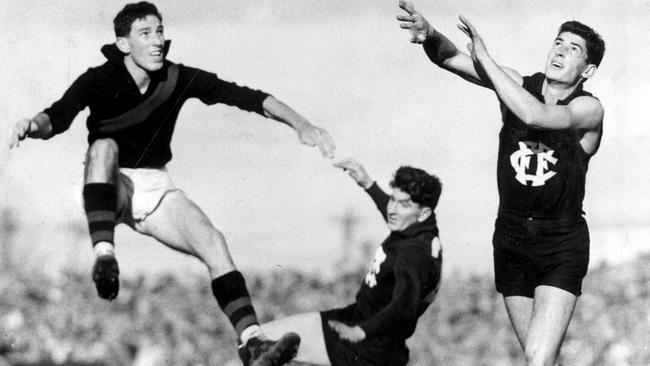
“I knew Andrea from Essendon High School and ended up introducing she and Ron at a local dance. At the wedding I recall the minister of the time wishing Ron and Andrea well on their journey, and then turning to me before saying “and best wishes to you Ken, you are best man tonight and I hope you are best man tomorrow”. I wasn’t but most importantly we won the game. I didn’t have a drink that night because I was a teetotaller back in those days.”
Andrea Evans said it was a time in their lives when weekends revolved around sporting commitments: “So Friday was a better night than Saturday for our wedding, even if we didn’t know what was going to happen. From memory the club doctor was there to keep an eye on them, although that group weren’t big drinkers,” said Andrea.
Evans, who despite leading the VFL goal-kicking in 1959 as a 20-year-old with 78 goals, and again the following season with 67 goals, had struggled for regular senior games with concussion in 1962 and then coach Coleman leaning towards a stronger-bodied option in the teenage Charlie Payne as Fraser explained.
“John Coleman in 1960 worked with leading Melbourne football writer Alf Brown at The Herald. Brown had this idea that Essendon couldn’t afford to have two skinny tall players in Ron and me in the key forward positions, and I think that got in John Coleman’s head a bit.
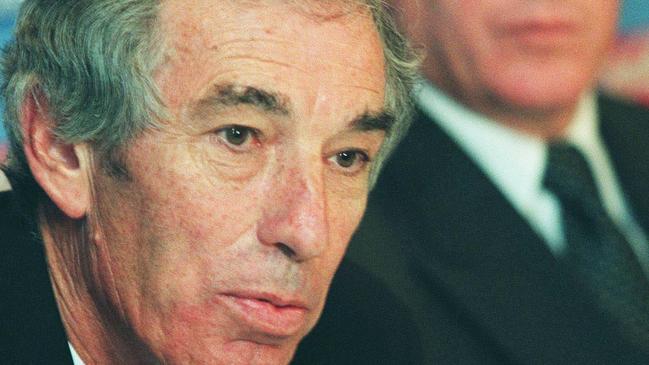
“Ron had to put up with both a big, tough full back and a resting ruckman in the back pocket, meaning he suffered some very heavy knocks. When ‘Coley’ became coach he tended to not favour Ron as much at full forward and instead went with a stronger built player in Charlie Payne.
“It wasn’t in Ron’s nature to hold a grudge and he just got on with things. As a player he was a bit like Peter Hudson in that he would kick five or six goals without you knowing it. He was a strong lead and had big hands, so when he got his hands on the ball it often stuck, plus he was a very accurate kick and a good lead. He was also scrupulously fair, as he was off the ground.”
At the end of that season Evans moved to Perth to take up a job in his field as an industrial chemist after studying science at Melbourne University. It was in Perth that he met Ross Kelly, OAM, who would become a lifelong friend and who was a guest of Andrea Evan’s at Tuesday night’s Hall of Fame dinner.
“Ron turned up at West Perth training one night so I said hello to him. A few days later I knew he rented a house near us so my wife and I called in to say hello. His wife Andy made me a lovely cup of coffee which I put on the floor, before kicking it accidentally over their lovely white rug. Ron didn’t hit me and from that moment we became very good friends,” laughed Kelly.
“Ron was always a very fair man, one with a deep understanding of football. From my point of view he was the perfect chairman of the AFL commission given he had played, been a club administrator and a successful businessman. So he understood the game at grassroots level just as much as business, a reasonably rare combination.”
It was in his first year at West Perth that Evans topped the WAFL goal-kicking with 97 goals, also achieving a very rare feat at interstate level when he represented Western Australia against Victoria, having earlier played for the Vics against WA.
On his return to Melbourne, Evans helped set up Spotless with Brian Blythe and built it into one of the biggest services businesses across Australia, before helping rationalise and consolidate the Private hospital sectors through Healthco. He had a midas touch across business which played a part in his elevation to Chairman of the AFL Commission
He also seen by some as the architect, along with Bill Kelty, of having driven the relationship with players and the modernisation in the upgrading of venues, first with Essendon moving to the MCG and then at the AFL.
Ken Fraser used a cricket analogy to describe his friend: “Ron was all about integrity and was very inclusive. He would listen to people and as a cricket person he played with a straight bat and was the same in life. He was a true gentleman and left so many great legacies, not just to the game of football but everyone he touched. He really did make people better persons.”
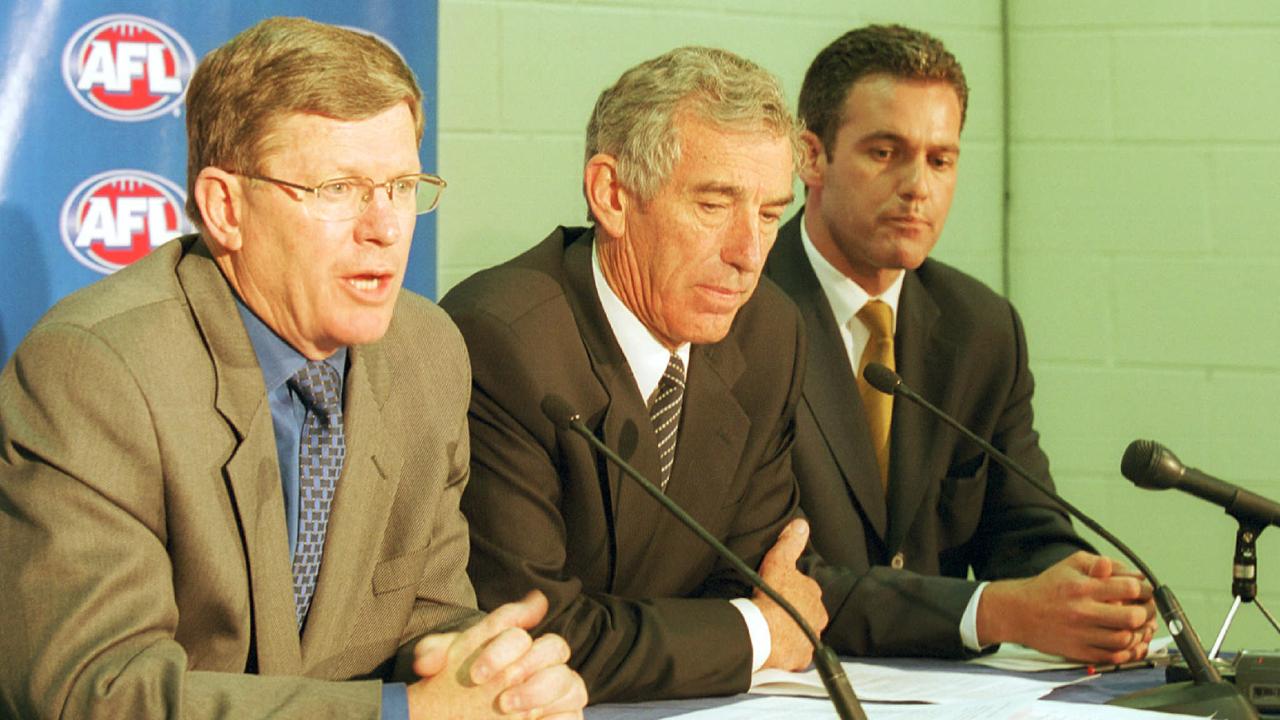
Andre Evans said it wasn’t unusual for she and her husband to attend three AFL games in a weekend, and he would always follow the same routine by going to the rooms of both teams to wish them good luck before dropping in with the same message to the umpires.
“Ron had mottos, one which ran along the lines of “honour the past, work hard in the present and plan for the future”, said Andrea.
“He would ring everyone to get their opinion before making big decisions. Even after he passed away, I’ve had calls from people asking me what Ron would do in such a situation.
“We hosted Prime Minister John Howard a number of times at Grand Finals. A very interesting person. When Ron became ill and it became public knowledge I would be in with him a lot of the time. The nurse came in one day and said “Mrs Evans, there is a phone call for Mr Evans” to which I replied “we are not taking calls”. She persisted and said “but Mrs Evans, it’s the Prime Minister”.
“His favourite players, well I knew he loved watching Peter Hudson. He loved the way he positioned himself, using space in the forward line and his kicking for goal.”



